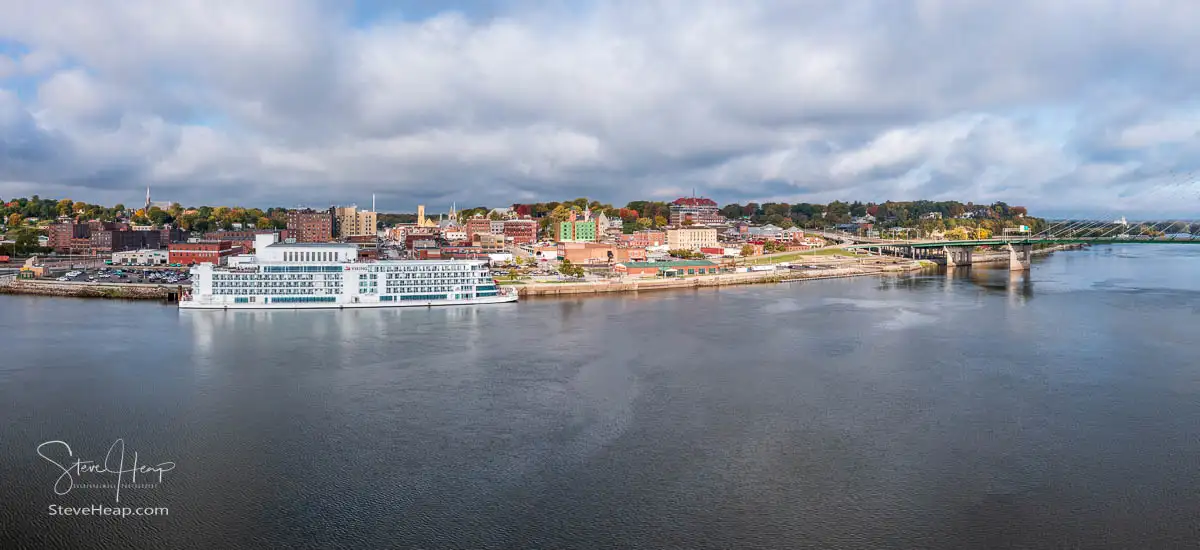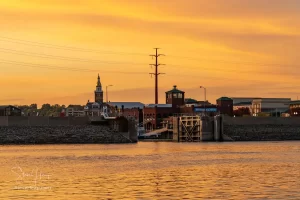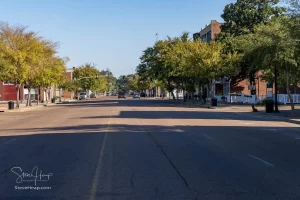This is one of a series of articles about the towns and cities visited on the Viking Mississippi cruise from St Paul in Minnesota to New Orleans in Louisiana. The introductory article about the cruise itself and the boat can be found here.
Day 5 of the cruise found our boat in Burlington, Iowa. Perhaps a post-industrial town, but still an interesting city to wander around. We docked alongside the downtown area and the local tourist information people were waiting on the dockside to help us with any questions about the city. No Presidential candidates, though!
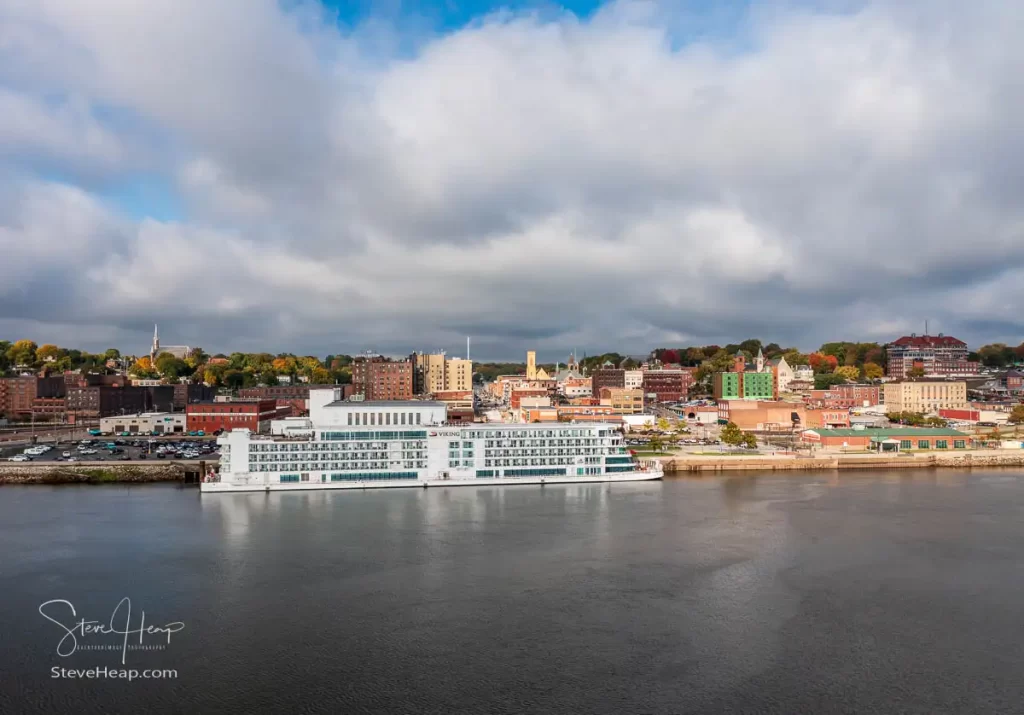
Burlington comes across as a city that was obviously prosperous in the past, perhaps less so now, but is making a big effort to be welcoming to new businesses and also visitors. We were just standing on a street corner wondering if we should cross to use the ATM machine and a couple stopped to ask if they could help us – and stayed for a little chat. Very nice!
The town itself is, like many other towns we visited, pretty quiet. Traffic is low, and not many pedestrians about, to be honest, but we still enjoyed our stroll.
The included tour was a narrated coach tour to three of the key attractions of the town with the tours being staggered so that not everyone arrived at the same time and place. The Garrett-Phelps House and Museum was a historic 19th-century residence & museum known for its Victorian-era furnishings & medical exhibits. It was very attractive and interesting and the medical exhibits came from a time when it was used to train nurses (at least I think it was!). The House is the grey one in this next image.
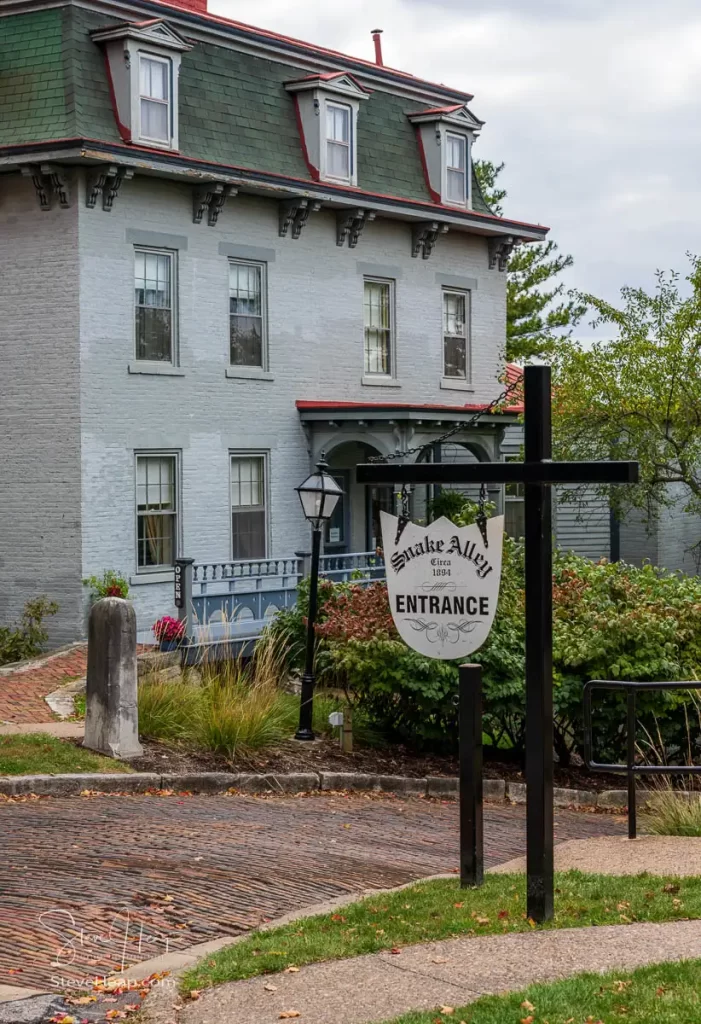
Immediately by the house is the second location – the famous Snake Alley. This has been recognized by Ripley’s “Believe it or not” as the bendiest, steepest street in the USA. This is what the Ripley site says:
The construction of Snake Alley began in 1894, however, the nickname, “Snake Alley,” wasn’t dubbed until a couple of years into the development. The early official maps referred to it simply as “6th Street.”
Many locals, such as William Garrett, filed a remonstrance with the city protesting the construction of the alley. The city explained to locals why the road needed to be constructed and why it needed to be built like a snake. See, it was part of an experiment to find the most convenient way to help horses and buggies to travel down.
Charles Starker, a German immigrant architect, and landscape engineer promoted the idea of a spiraling street in Burlington and helped design the alley. He also worked with William Steyh, a city engineer, who laid out the unusual street pattern.
Unfortunately, the town’s experiment was not as successful as they had hoped. Many horses would lose control off the top of the alley and trip over the limestone curbing, causing some to break their legs. Thankfully bricks were eventually laid at an angle to allow horses hooves to obtain a better grip.
By 1909, the alley became a hit with automobile traffic. So much, so that car dealers used Snake Alley for their test drives. Around the 40s, residents who lived along the alley were finally allowed to park inside of the curves.
Copyright: Ripley’s Believe it or not.
The short street is only 275 feet long but has five half-curves and two quarter-curves. It is just slightly shorter than the famous street in San Francisco, which is how it got the record. Interesting to photograph:
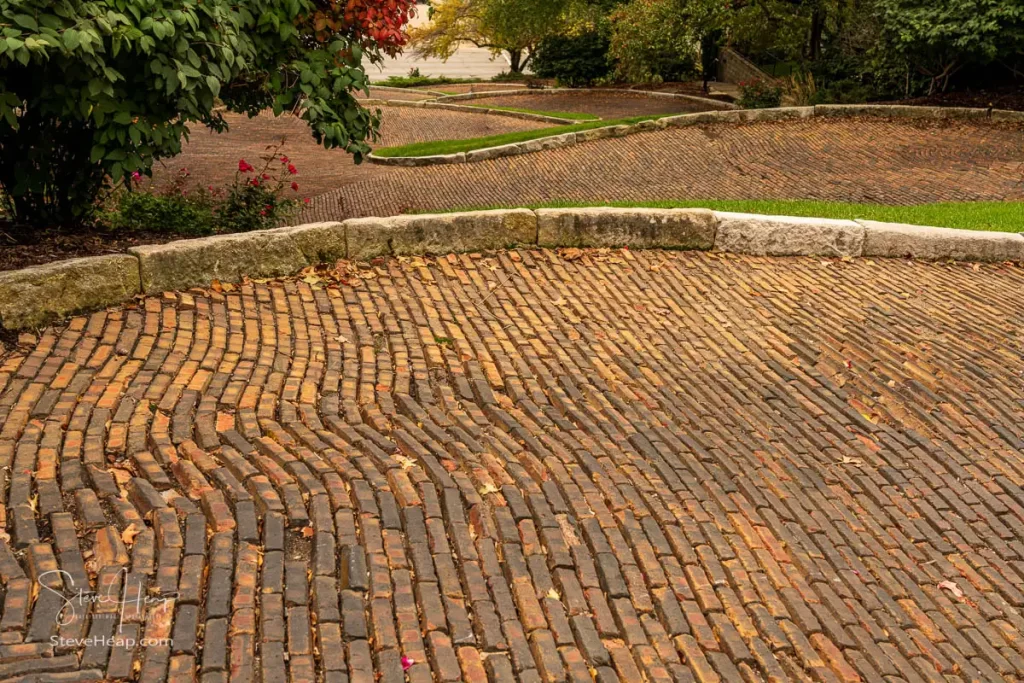
It also has some lovely old homes alongside it – imagine having breakfast on this verandah:
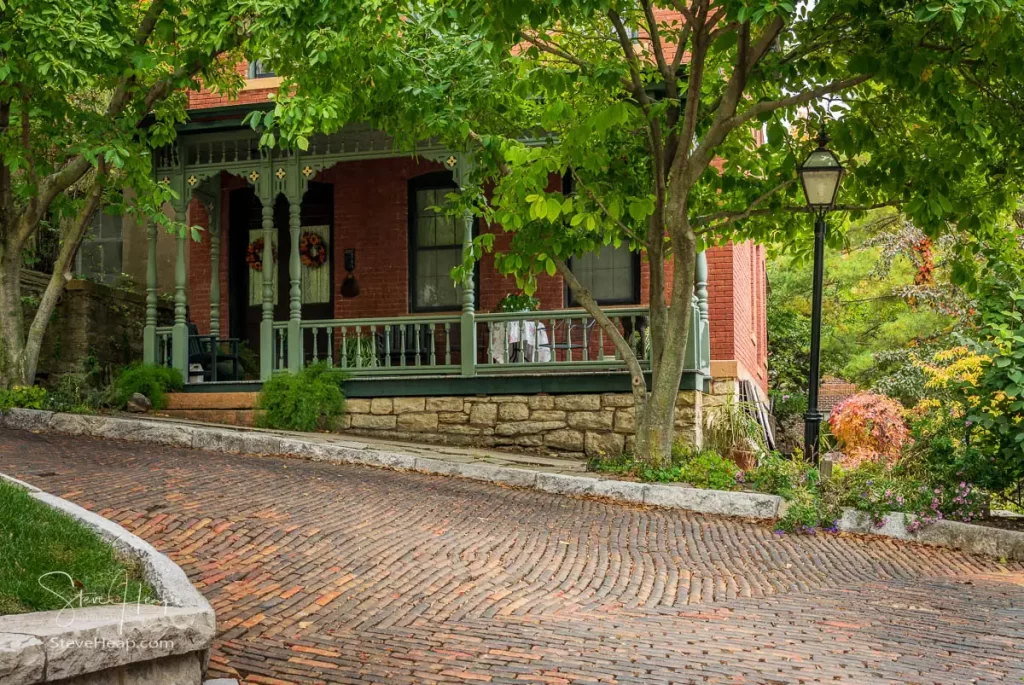
We did see a car driving down it, so it is a road that is passable by today’s vehicles.
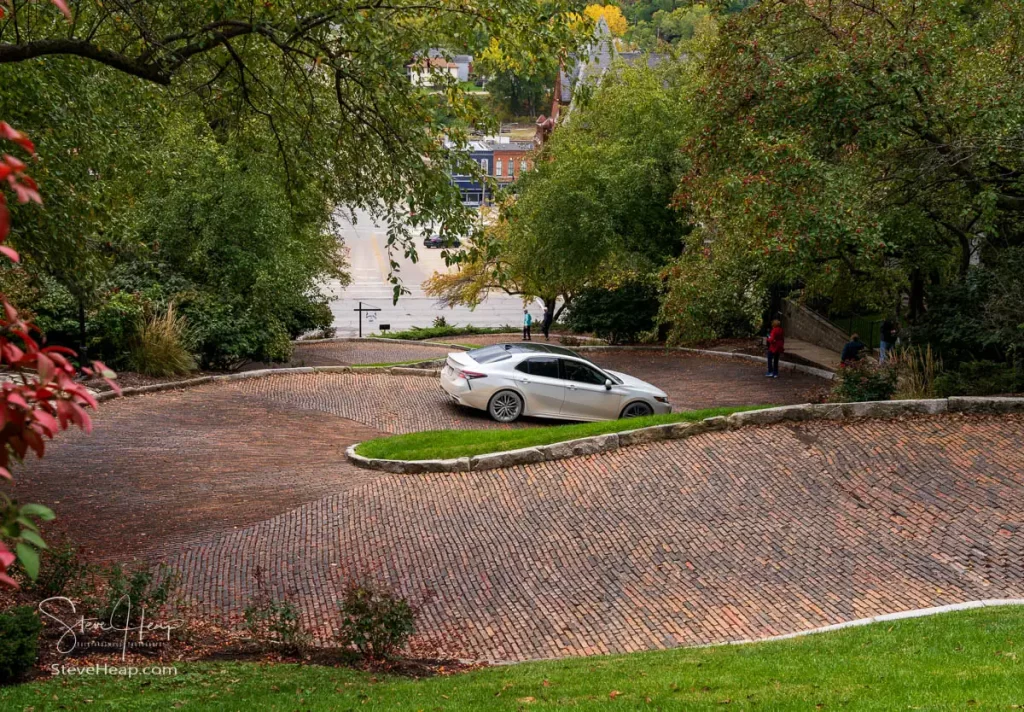
The view from the top of the road shows off one of the local churches with a very distinctive spire. St John Catholic church.
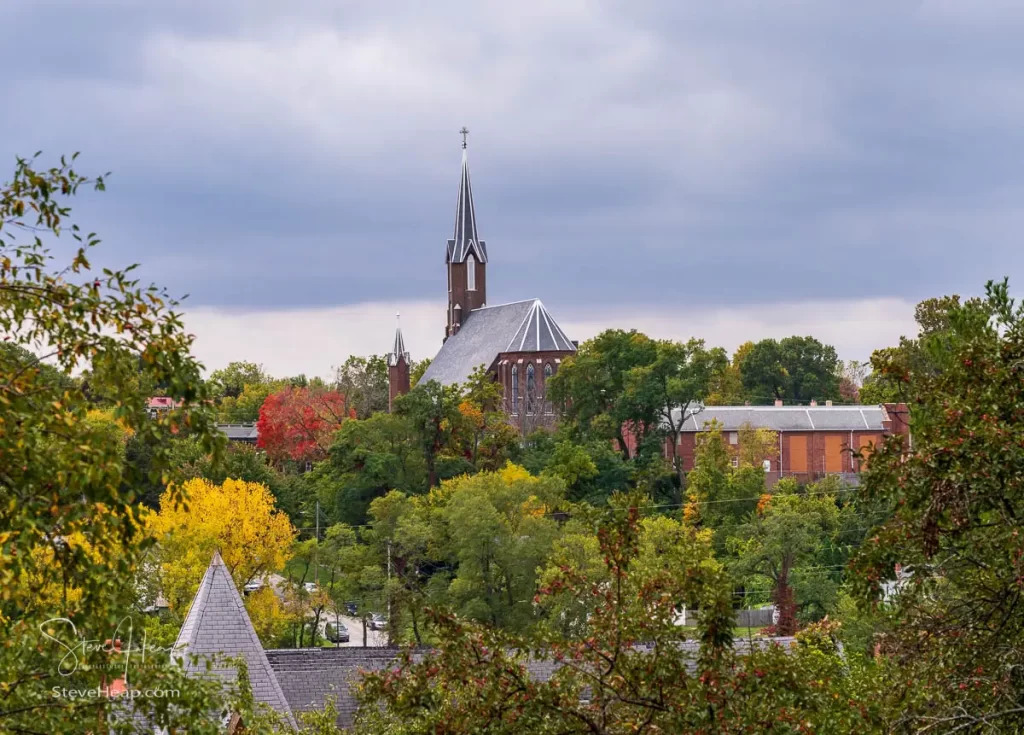
The third spot was the Heritage Center Museum in the old Public Library in town. Set over multiple floors and with some of the original furniture from the public library still in place, this is quite a treasure trove of local information. I didn’t know that Burlington was the Crinoid Capital of the world! Crinoids, of course, are a type of marine animal that are found as fossils in rocks and are found so abundantly in this area. There is quite a collection in the museum.
With that, we were taken on another short ride to the smallest park, known as Mosquito park, with a great view over the Mississippi (although it was cloudy by this time and so not a great thing to photograph) and then back to the boat for refreshments and a chance to walk around downtown.
Dominating the area is the Great River Bridge, an asymmetrical, single tower cable-stayed bridge over the Mississippi river to Illinois and opened in 1993:
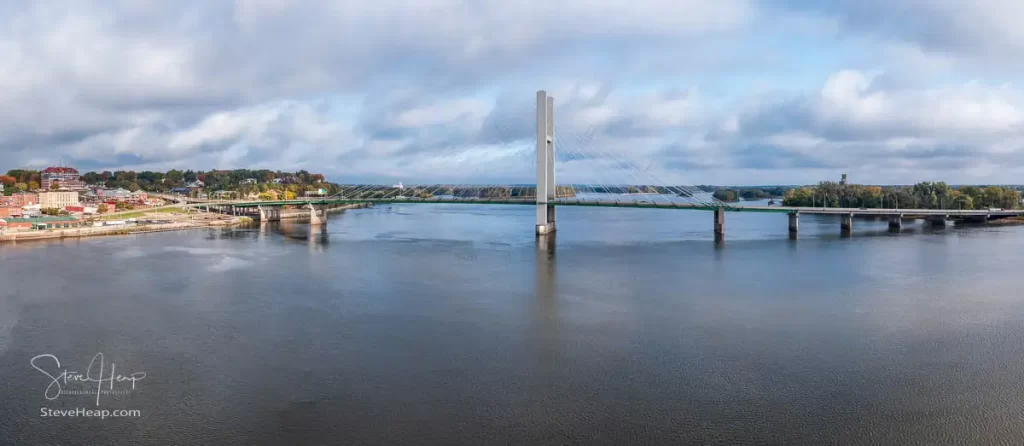
And with that, we headed off to Hannibal in Missouri, the home of the writer Samuel Clemens, otherwise known as Mark Twain.
